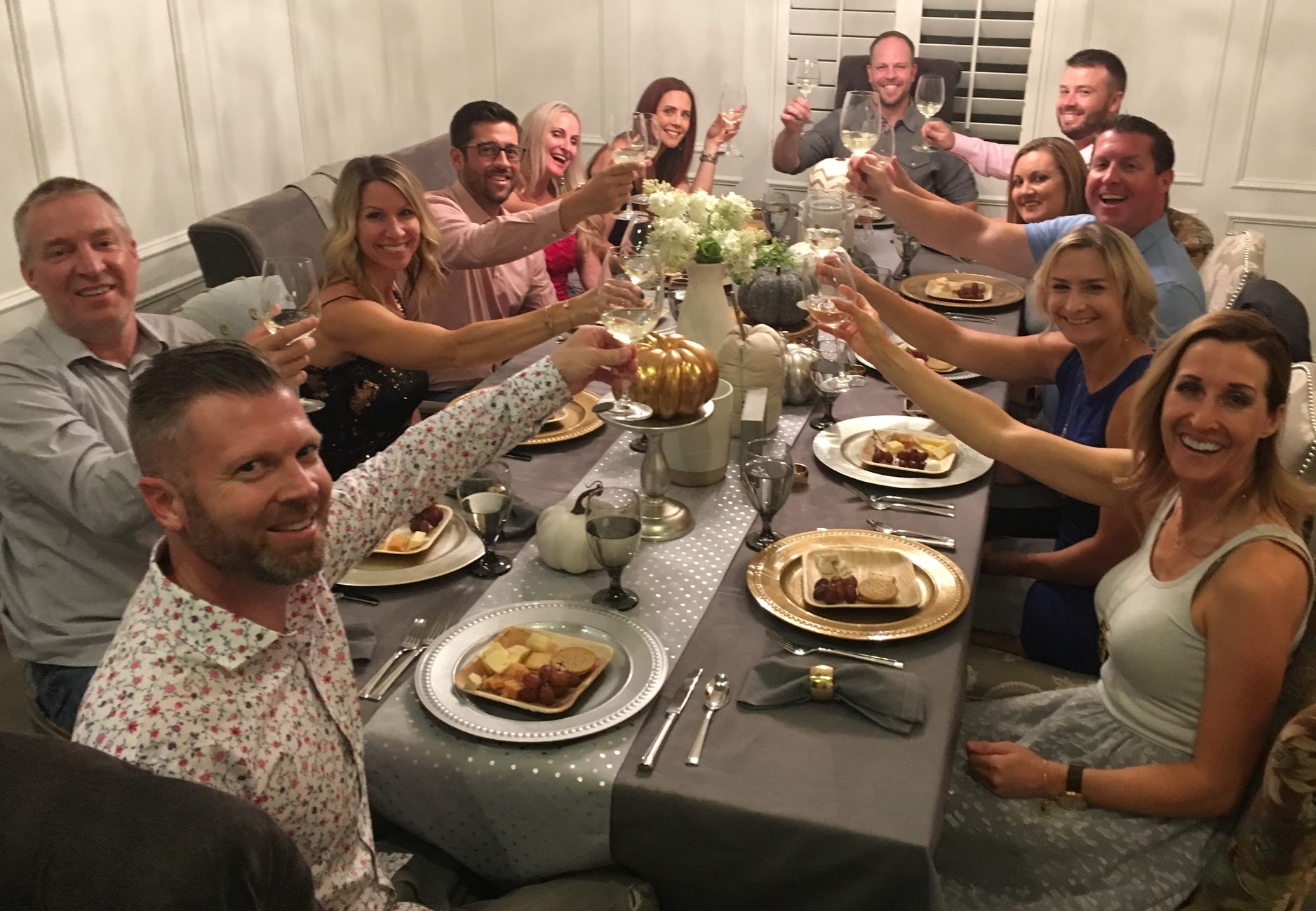Historical Wineries To Visit In Sonoma - Wineries To Explore In Sonoma Valley
Wineries With Unique Gamay Wines - Luxury Wine Tasting In Sonoma County
Wine tasting is an art that requires practice and an understanding of assorted aspects concerned in the course of. One essential element of wine tasting is the development and interpretation of tasting notes, which serve as a guide for both novices and seasoned connoisseurs. A Guide To Understanding Winery Wine Tasting Notes can improve your wine-tasting experience, making it extra significant and enjoyable.

Tasting notes are concise descriptions that seize the essence of a wine’s flavors, aromas, and overall character. Often composed by professional tasters, winery tasting notes provide insights into the nuances of various wines. They may help wine enthusiasts understand what to expect from a selected bottle. Nevertheless, tasting notes can vary extensively in style and element based on the writer's experience and palate.
Wine Tasting Tours In Russian River Valley - Sonoma Wine Tasting Adventures
When you first method a glass of wine, your senses will begin to have interaction right away. The sight, scent, and taste of the wine will converge to give you a whole experience. Tasting notes typically start with the visible assessment, where the color of the wine is taken under consideration. Colour plays a big function in indicating the wine’s age, grape selection, and even its flavor profile.
After assessing the visible side, the subsequent step involves swirling the wine within the glass. This action aerates the wine, allowing its aromas to awaken. Smelling the wine supplies crucial insight into its complexity. The preliminary sniff can ship a flood of scents that may embody fruity, floral, natural, or earthy notes. This is usually the most subjective a part of tasting, as individual experiences can dramatically differ.
In winery tasting notes, descriptors are sometimes categorized into main, secondary, and tertiary aromas. Main aromas usually stem from the grape selection, secondary aromas derive from fermentation processes, and tertiary aromas arise from getting older. Understanding these classes can help you respect the depth of a wine, and so they also provide the vocabulary to express your experience higher.
Wineries Known For Sustainable Practices In Sonoma - Sonoma Wine Tastings
Following the olfactory encounter, your focus will shift to the taste of the wine. This is where the first characteristics—sweetness, acidity, tannins, alcohol—come into play. Tasting notes typically detail these flavors in multiple dimensions, together with the preliminary attack on your palate to the lingering end in your tongue. A high-quality wine will present a harmonious balance between these components.
Whereas tasting, it is important to ponder the body of the wine, which can be described as light, medium, or full. The physique contributes significantly to your overall impression, serving to you think about how the wine pairs with food or whether it stands alone as a sipping wine. Balancing the physique with the other traits provides you with a fuller understanding of what the wine has to offer.
The end of the wine, also referred to as the aftertaste, is one other critical side typically included in tasting notes. A long, nice finish usually signifies a higher high quality wine, while a brief or cloying aftertaste could recommend in any other case. Evaluating the end can offer additional insight into the wine's complexity and distinction.
Understanding the context of winery tasting notes can also be useful. Tasting notes can provide contextual details about the vineyard's location, climate, and grape-growing practices. This context provides another layer of appreciation for the wine, permitting enthusiasts to connect the sensory experience with its origins, thus enhancing the enjoyment further.
Wineries Focusing On Single Vineyard Wines - Wine Tasting Experiences In Sebastopol
Many wineries present tasting notes on their web sites or labels, typically written in an approachable but informative style. Nevertheless, not all winery tasting notes are created equal. Some may be overly technical, whereas others would possibly prioritize advertising flair over insightful analysis. Studying to navigate these notes can arm you with the data to make knowledgeable choices when selecting wines.
Taking Part in tastings at wineries also can deepen your understanding of wine tasting notes. Interacting with knowledgeable employees can provide you a more hands-on approach to exploring different wines and the language used to explain them. Wineries Specializing In Sparkling Wines. You Will have the opportunity to ask questions, interact in discussions, and potentially refine your palate in real time.
Experimentation is essential for mastering wine tasting notes. As you pattern totally different wines, attempt making your own notes. Focus on describing the wine’s color, aroma, style, and end. Over time, you’ll develop a personal vocabulary that you can check here resonates with your sensory experiences. Every note you create will assist refine your palate, permitting you to appreciate wines at a deeper stage.
Family Friendly Wineries With Outdoor Spaces - Enjoying A Vineyard In Sonoma
In conclusion, a Guide To Understanding Winery Wine Tasting Notes presents a complete framework for diving into the world of wines. It equips you with the methods and language necessary to articulate your experiences. Whether you are a casual drinker or a dedicated aficionado, understanding and utilizing tasting notes can profoundly impact your wine journey. This knowledge not only enhances your enjoyment but in addition connects you deeply with the wealthy narratives every bottle tells. By embracing this journey, you turn out to be a part of the attractive mosaic of wine tradition, the place each sip unveils a new story ready to be discovered.
- Wine tasting notes sometimes encompass a variety of sensory descriptions, including aroma, flavor, acidity, physique, and end, permitting tasters to completely respect the wine's characteristics.
- To enhance your understanding, familiarize yourself with widespread wine terminology corresponding to "tannins," "oakiness," or "terroir," which may help decipher the notes more successfully.
- A systematic approach to tasting includes first visually assessing the wine's color and clarity, adopted by swirling to release aromas, then inhaling and describing what you experience.
- Taking notes during tasting might help establish patterns over time, improving your palate and making it easier to recall preferences for future alternatives.
- Don't overlook the affect of food pairings; tasting notes can differ tremendously when a wine is loved with complementary flavors, altering perception and delight.
- Pay consideration to the wine’s vintage, as weather conditions in a given 12 months can considerably have an result on the final product, adding another layer to the tasting notes.
- Consider the winemaker's style and philosophy, which might shape the wine's profile and impression how its notes evolve with each sip.
- Working Towards with completely different grape varieties can broaden your vocabulary; every type brings distinctive characteristics that may improve your ability to articulate tasting notes effectively.
- Participating with wine professionals or attending tasting events can provide valuable insights, offering a richer context for understanding personal tasting notes.
- Keep In Mind that tasting is subjective; individual preferences and experiences will shape one’s interpretation of the identical wine, enriching the general enjoyment of wine exploration.
What are wine tasting notes?
Wine tasting notes are descriptive comments made by tasters in regards to the look, aroma, taste, and end of a wine. They provide an outline of the wine's traits and may help shoppers perceive the style and quality of the wine.
Wineries With Unique Gamay Wines - Enjoying The Best Wineries In Sebastopol
Why are tasting notes necessary when choosing wine?
Tasting notes can guide you in choosing a wine that fits your palate. They provide insights into flavors and aromas, helping you to match wines with food or occasions. Understanding these notes enhances your total wine experience.
How ought to I read wine tasting notes?
(Elegant Wine Tasting Locations In Sonoma)
Wineries With Sustainable Practices - Best Vineyard Visits In Sonoma

When reading wine tasting notes, take note of the structure: search for descriptions of color, aroma, flavor, and finish. This will allow you to grasp the wine's profile and determine if it aligns along with your preferences.
What terms generally seem in wine tasting notes?
Common terms embody "tannin" (the structure), "acidity" (the crispness), "body" (the weight), and numerous flavor descriptors like "fruity," "earthy," or "spicy." Familiarizing your self with these terms can deepen your understanding of wine.
Wineries Offering Private Events - Best Vineyard Visits In Sonoma

Can I create my own tasting notes?
Yes! Writing your personal tasting notes can enhance your wine tasting experience. Focus on your observations of taste, aroma, and different sensory traits. This click to read personal practice may help you refine your palate over time.
How do I establish the aromas in wine tasting notes?
Wineries With Live Music Events Occasionally - Enjoying Wine Tastings And Vineyards Near Sebastopol
To establish aromas, practice smelling quite a lot of scents and associating them with wines. Swirl the wine in your glass to release its aromas, then take a moment to breathe in deeply earlier than figuring out any distinguished scents.
What is the distinction between professional and private wine tasting notes?
Professional tasting notes may use extra technical language and specific terminology, while personal tasting notes are subjective and replicate individual experiences. Both are priceless for understanding and enjoying wine, but personal notes could resonate more together with your distinctive tastes.
How can tasting notes improve my wine appreciation?
Good Wineries For Large Groups In Sonoma Valley - Vineyard Tours In Sebastopol
Tasting notes can improve your appreciation by serving to you to grasp and articulate the complexities of wine. They encourage conscious tasting and supply a framework for comparing completely different wines, resulting in a richer enjoyment of the beverage.
Are there any apps or instruments to assist with wine tasting notes?
Sure, there are several apps designed to help users record and organize their tasting notes. These tools often provide options like flavor wheel guides and wine database searches, making it simpler to trace your journey via totally different wines.